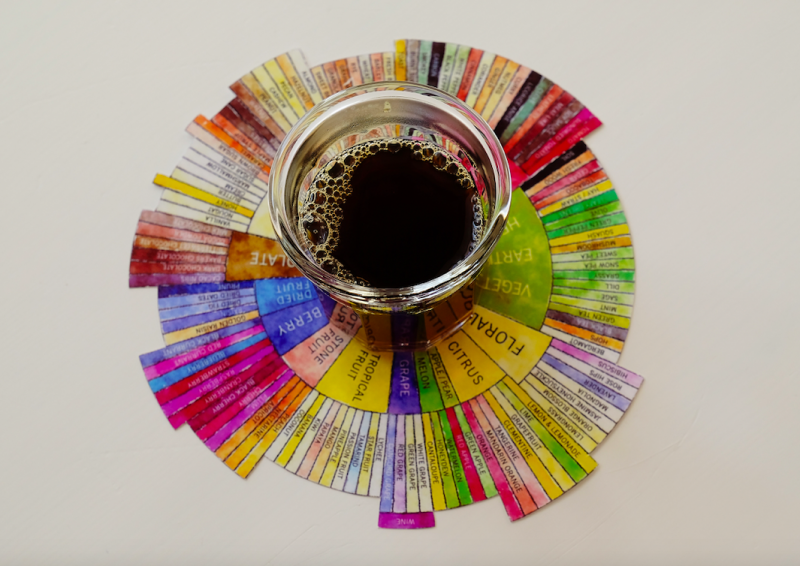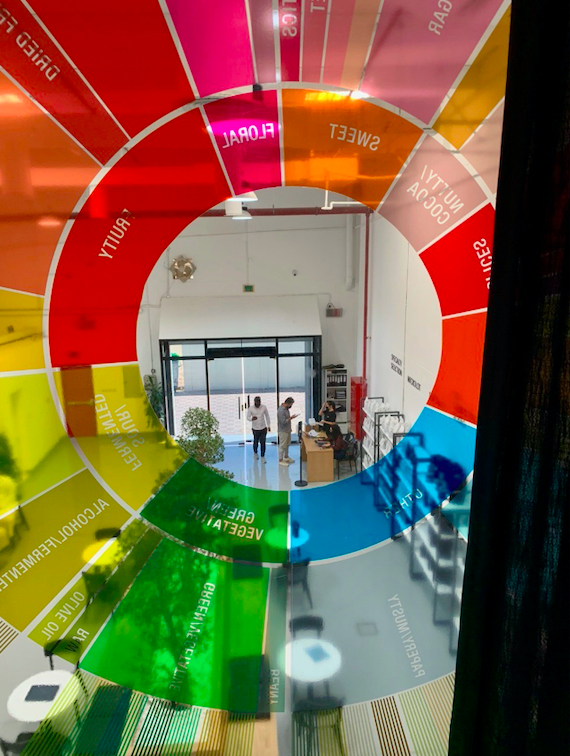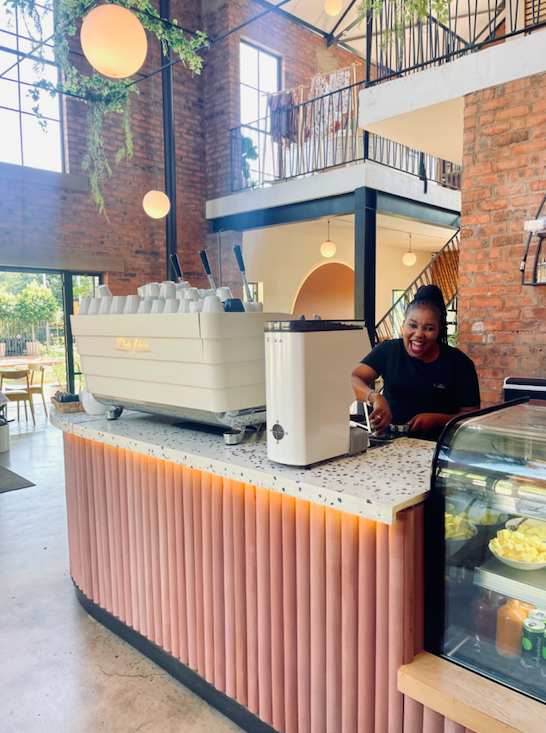Imile de Villiers helps us keep the music of coffee alive, with a tongue in cheek reminder not to get so caught up in high end coffee, that you miss the essence of coffee itself.
Words by Imile de Villiers

I was happier when I was a novice guitarist than I am now, because I didn’t know then how much I actually suck. Now, however, it is glaringly obvious. I mean, my mother-in-law thinks I’m great, so there’s that. But I know the truth. Oasis, Eagle-Eye Cherry, Nothing Else Matters, and Adam Sandler’s songs from The Wedding Singer would spark joy in my teenage heart… These days I’m just angry that every blues solo I play sounds exactly the same as the last one. Am I a better player? Yes. But am I a happier player? Has the knowledge that I’ll never be able to reproduce a blazing Stevie Ray Vaughn solo made me miserable?
What did you drink before that first flat white or pour over that made the heavens part and angels descend? It was probably instant, right? And perhaps, if you remember a life before specialty coffee, the bottomless option from that coffee chain? We drank it and it was good.
A while ago just before moving into a new house, I was busy cleaning up after all the painting was done, when the instant coffee I’d brought for the painters started calling to me. The nostalgia of sickly sweet and bitter, milky yet somehow also watery coffee, coupled with the smell of manual labour, was too much to resist. Heaven. Or rather Valhalla if I had to imagine what a hall full of Vikings smells like.
Don’t get me wrong, I have a reputation to uphold among friends and family, just like I presume you do - “I’m not making coffee for him, he can make his own coffee.” Yes. Yes, I will. I taste enough bad coffee when training new baristas, and I brought along my scale and specialty beans and grinder and my fancy brewing device, because I know you don’t have ‘proper coffee’ at your house. So, while friends and family are all sitting and enjoying their instant whatever that is, I’ll still be grinding away at my Kenyan peaberries, and by the time all the biscuits are finished, my pour-over is finally done and now I can sit down and enjoy my decent, but not perfect, cup of coffee (I didn’t bring my temperature controlled pouring kettle along, or remineralised water, this hand grinder doesn’t give me the same grind distribution as the grinder at work, and if I am honest, the filter machine is much more consistent than my pour-over technique, so no, it is not perfect). “Am I even enjoying this cup?” I wonder to myself as I smile and nod along to the conversation I’m not following anymore. I better pretend it is great though, because why go through all that effort for a cup that only makes me think of its flaws? Has drinking great coffee made me miserable?
How did I even get here? And are you sure you want to know? Ok, fine. Don’t say I didn’t warn you.
Let’s get the basic tastes down before we get to those fancy flavour notes of strawberry ice cream, poached pear, or jalapeno and green pepper (these are not made up!). Depending on who you ask, there are 4 to 6 basic tastes that your tongue can pick up - bitter, sour, sweet, salty, and umami (in 1990 scientists decided to agree with what was common knowledge in the Eastern hemisphere). The sixth is still in contention, and a bit of a mouthful: kokumi, meaning mouthfulness (sorry, not sorry), and/or oleogustus, the taste of fat. We’ll skip these for now, since they are mostly covered under mouthfeel in coffee tasting. Coffee contains, or rather can contain, all 5 tastes, so let’s explore that a little, but a note before we do: taste is only the five mentioned above, and when you combine it with aroma, it becomes a flavour. Your brain combines complex sweetness, acidity, and bitterness with over 200 possible, subtle retronasal aromas, and then carefully computes it to: Coffee. We’ll try to reverse engineer these tastes so that we can liken the coffee to other familiar, everyday tastes and flavours.
Coffee is bitter, there is no getting around that, so when you taste coffee you might as well acknowledge it straight away and just tell us how bitter it is. A simple high, medium, or low will do - if it’s good enough for the World Barista Championship Scoresheet, it’s good enough for us. The tricky part is knowing what qualifies as high, medium or low, and the only way to answer that is to taste more coffee to compare it with. So, get on with it, buy those beans, sign up for that subscription. You are investing in your education, and possibly your misery. I did warn you...
Sour and acidic are the same, but different. So let’s keep it simple and say sour when it is unpleasant or over-powering, and acidic when it is pleasant or balanced, also remember high, medium, or low. No, high acidity doesn’t equal sour. Lemonade can balance sweetness with high acidity, and so can coffee. Now, let’s think for a moment: where do we ever taste acidity in our food? Start listing some sources of acidity and you’ll quickly realise you are mostly listing fruit or fermented foods. This knowledge is helpful when we take the next step into identifying specific flavours in our coffee, but also when we start talking about the next taste.
What else do fruit have in common apart from acidity?
Sweetness! It goes with acidity like coffee goes with Monday mornings. It might be for this reason that your brain can trick you into thinking a coffee is sweet, while there is no substantial amount of sugar in roasted coffee beans. Your brain probably thinks “the last time I tasted this acidity was in that fruit where I also tasted sweetness, so it must be there”. Let this perceived sweetness be your guide whether you are dialing in your espresso before opening the shop or testing a new pour-over technique or recipe at home, chase after it and it will lead you to deliciously balanced coffees. After all, has anyone ever complained that a coffee is too sweet?
This concludes the main tastes in coffee, and if you can recognise these three in your cup, and categorize them as high, medium, or low, then you have done a lot. Congratulations, you are well on your way to becoming a miserable coffee drinker.
For the sake of completeness, let’s just touch on salty and umami too. They are not part of the main tastes we usually find in coffee, but they are worth your while looking out for: Barista Hustle’s Coffee Compass describes a strong, under-extracted coffee as salty, while former World Barista Champion, Hidenori Izaki, competed in 2013 with a coffee he described as umami and sweet.
Now if you really want to stop enjoying coffee, buy a fancy bag of beans with lots of taste descriptors on it and then try to find those flavours in your cup! “It just tastes like coffee to me.” Excellent. Your coffee should definitely taste like coffee. So where is the strawberry ice cream, the jalapeno and green pepper, orange blossom and bergamot, you may ask? Well, try to describe any food you can think of, it is not so easy! It takes practice. Go back to sweetness, acidity and bitterness: chocolate is sweet, but is that sweetness sugary sweet, or more subtle and milky sweet? Is there a roasty bitterness to it like with some cocoa powders?

If you really want to be an over-achiever, then start paying attention to whatever you eat or drink. How can you describe a coffee’s acidity a little further if you don’t know the tartness of a raspberry, the crispness of a Granny Smith, the sweetness of an orange, or the subtle tang of a single origin dark chocolate? Eat everything and drink everything, and then describe it using the basic rules of this new language we are learning.
If you’d like to be a bit more intentional rather than just turning to Epicureanism, here’s what you need and what you can do to immediately stimulate those taste centres:
- 5 x 1L cooldrink bottles
- A scale accurate to 0.1g
- Sweet: Sugar 24g
- Salty: Salt 4g
- Umami: MSG 2g - from your local spice shop
- Sour: Citric acid 1,2g
- Bitter: Caffeine 0,5g - I found these in 100mg capsules at a pharmacy, so 5 capsules will work. In a pinch I’ll just run some water through a spent espresso puck - it’s not as accurate, but you’ll get the bitterness.
Prepare these solutions ahead of time by mixing the different things with 1L water. Pour 200ml of each solution into similar cups, then have someone mix up the cups and try to figure out which taste is which. This is a very good way to introduce someone to the 5 basic tastes.
You can now dilute and mix these solutions as you wish, here are a few examples of how to do it:
This will kickstart your way to a new way of tasting, for both better and worse.
A friend, called Matt, once said “Coffee is about the people” and that he could enjoy any old, rubbish coffee (my word, not his) as long as he could have it in good company. Matt is a better guy than most, but he is also smart. Remember how we want to describe coffees comparatively? Is there darkness without light? Is there Nickelback without Jimi Hendrix? Is there good coffee without bad coffee, and how would you know the difference? You have to taste it, and I would argue, sometimes you have to drink it. There is a legend of a skilled coffee taster who doesn’t utter a bad word when you make her a bad coffee, she just adds some sugar and enjoys it. So when you are offered that cup of sludge, rather have a bad coffee in good company, than a good coffee in miserable company. And when you offer people a beautiful and well brewed specialty coffee, please try not to make them miserable too. Happy tasting!

Coffee should make you as happy as Angel looks making coffee :) Spotted at Village at Yard 41 in Howick